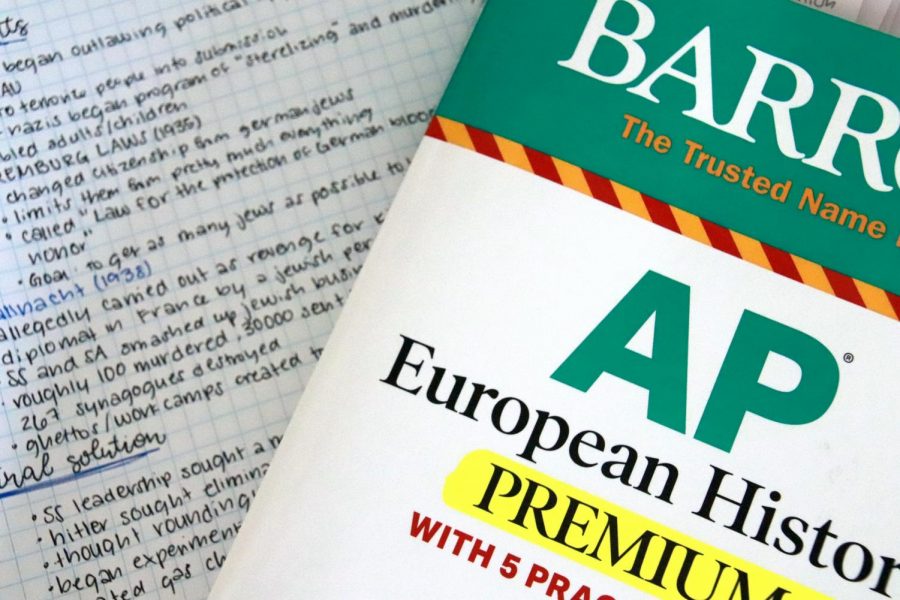2020: An Unorthodox Year in AP Testing
May 26, 2020
Without a doubt, COVID-19 has severely impacted the routine of students across the globe. Instead of waking up early to commit to their school campuses, students everywhere are stuck at their homes doing schoolwork remotely or taking extreme precautions as they attempt to continue their education. One program, in particular, that has been shaken by the pandemic is the Advanced Placement (AP) program run by the College Board in the United States. High school students have spent the entire school year preparing for AP exams that could potentially earn them credit for higher education only to find their exams transferred online and dramatically altered. Although it is important to be flexible in this time, the new format of AP exams has been a subject of frustration and confusion for many students and their grievances are understandable.
Due to equity concerns and technological constrictions, the College Board found that they had to drastically alter the format of all their AP exams as they brought them online. According to the College Board, some of the most significant overall alterations are the reduction of the tests’ time limits, the removal of sections and questions from the exams, and the fabrication of new rubrics to fit the new format. The majority of exams have completely removed their multiple-choice sections as the College Board prioritizes practical skills. STEM AP exams have focused on equation and concept application while humanity subjects use long-essays and short-answer questions to assess students’ analysis and processing skills. World language exams have cut simpler language skills like vocabulary identification in favor of assessing conversational prowess and fluency while art-based APs are moving their portfolio submissions online.
Naturally, a lot of students have mixed feelings about the new AP exam formats. Of the copious changes made to the AP exams this year, many can be viewed both positively and negatively. The majority of students are reveling in the fact that the College Board has been forced to make all AP exams open-note and to declare the use of the Internet as acceptable. Considering a majority of students these days are well-adapted to technology, another positive has been the introduction of typed responses. Regarding this option, sophomore Anika Kumar said, “I think it’s a relief because, though I can write fast, it becomes close to illegible once I revert to cursive. Then, my hand starts hurting and I lose time just trying to make my hand less sore. I am a pretty fast typer, and I think my flow of ideas, in general, is just better when I type.”
Students are having a variety of reactions to the length of the exams, though. Perfectly summarizing the up and downsides of the shortened exams, Kumar said, “This could be good or bad depending on who you are, but I, personally, have a terrible attention span and get really tired, so this is an excellent development for me. The negative is that there are fewer factors that incorporate into your final score, so if you screw up once, you’re done. There’s nothing else that can pull up your score.” Another controversial move has been the altering of many exam rubrics. While many believe the new rubrics allow for credit to be earned much more easily, others do not enjoy the introduction of these new rubrics. Specifically referencing his AP European History Exam, sophomore Carlo Reyes said, “A big negative is there’s a different DBQ (document-based question) format than the one that we practiced with. I prefer the old one because, in this new one, there are a lot of different and new ways to earn points. It’s easy to forget, especially since we’ve been studying and using the old format for months.”
One definite negative, however, is an unavoidable consequence of social distancing. Kumar explains, “It’s hard to know what environment you work best in at home. My house is typically pretty loud with just my sister at home, and it’s hard to not be disturbed or distracted even if you close yourself off completely.” Along with access to technology, WiFi, and educational accommodations, individual home environments have been another difficulty affecting AP exams. It is almost impossible to know how factors like technology and comfortable work environments will hold-up during students’ exam time slots.
Factors like these have led to a multitude of unsubmitted responses and frustrated students. Students nationally have reported issues with submitting their exams, even when they attempted to do so well within the time limit. In an article by NBC News, the College Board commented the previous Monday, “Approximately 50,000 students took today’s AP Physics C: Mechanics exam. 98% submitted their responses, while approximately 2% encountered issues attempting to submit their response.” Students in the minority percentage have felt a personal injustice at their inability to submit the responses they had crafted. All these factors have ultimately culminated in startling legal action against the College Board. According to The Washington Post, a lawsuit was filed against the College Board suing them for over $500 million, charging the College Board with engaging in a variety of illegal activities such as “breach of contract, gross negligence, misrepresentation, and violations of the Americans With Disabilities Act.”
Although students knew that the AP exams taken this year will drastically differ from the ones in previous years, it seems as if no one quite anticipated the frustration, panic, and pure drama that has resulted from this year’s exam format. This year, it seems as if students might need to do more than study if they want to ensure their AP exams go well, and many will be watching the outcome of this lawsuit with keen interest and maybe the hope for retribution.




